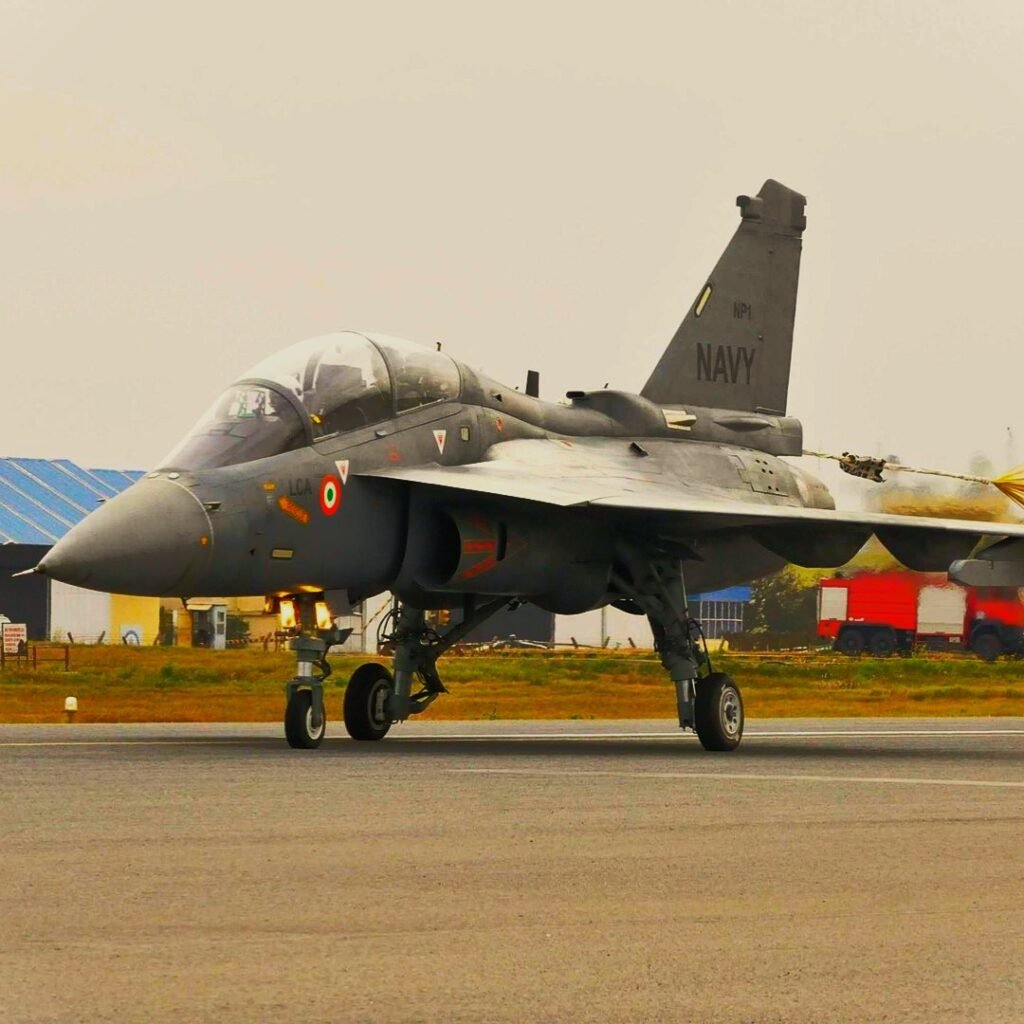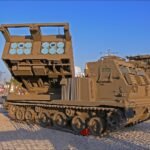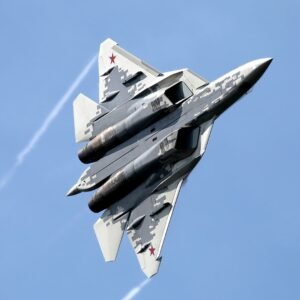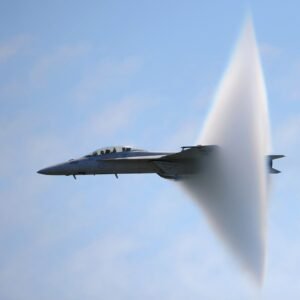Introduction of HAL LCA Tejas
The HAL LCA Tejas is a single-engine, fourth-generation, supersonic, lightweight, multirole fighter aircraft developed by the Hindustan Aeronautics Limited and the Aeronautical Development Agency for the IAF and the Indian Navy. The development of the LCA began in the 1980s with the goal of producing modern, indigenous fighter aircraft for the Indian armed forces. The LCA program has been through several phases, with the first flight of the prototype taking place in 2001. The aircraft has undergone several upgrades and changes to its design since then, with the latest version, the Mark 1A, being inducted into the IAF in January 2021.

The HAL LCA Tejas is designed to be a lightweight, highly agile aircraft that can perform a variety of missions, including air-to-air combat, ground attack, and reconnaissance. It is equipped with a variety of advanced avionics and weapons systems, including a multi-mode radar, electronic warfare suite, and beyond-visual-range missiles.
The HAL LCA Tejas has been a significant achievement for India in terms of the indigenization of defense technology and self-reliance in the aerospace sector. The aircraft has been developed by a team of Indian scientists and engineers and has been manufactured by HAL, a leading aerospace company in India. The success of the LCA Tejas program has also led to the development of other indigenous defense systems in India.
What is The Reason Behind for India Made a HAL LCA Tejas?
The HAL Tejas Light Combat Aircraft (LCA) is an Indian-made fighter jet that has been developed by the Hindustan Aeronautics Limited (HAL) to meet the Indian Air Force’s (IAF) requirements for a modern, lightweight, multirole fighter. The development of the Tejas LCA was driven by the need to replace India’s aging fleet of Soviet-era MiG-21 fighter jets, which had reached the end of their operational life.
One of the main reasons for the development of the Tejas LCA is to reduce India’s dependence on foreign-made weapons systems. Historically, India has had to rely heavily on foreign-made weapons systems, which can be costly and can also be subject to political and economic pressures. By developing its own fighter jet, India hopes to gain greater control over its defense capabilities and to reduce its dependence on foreign suppliers.
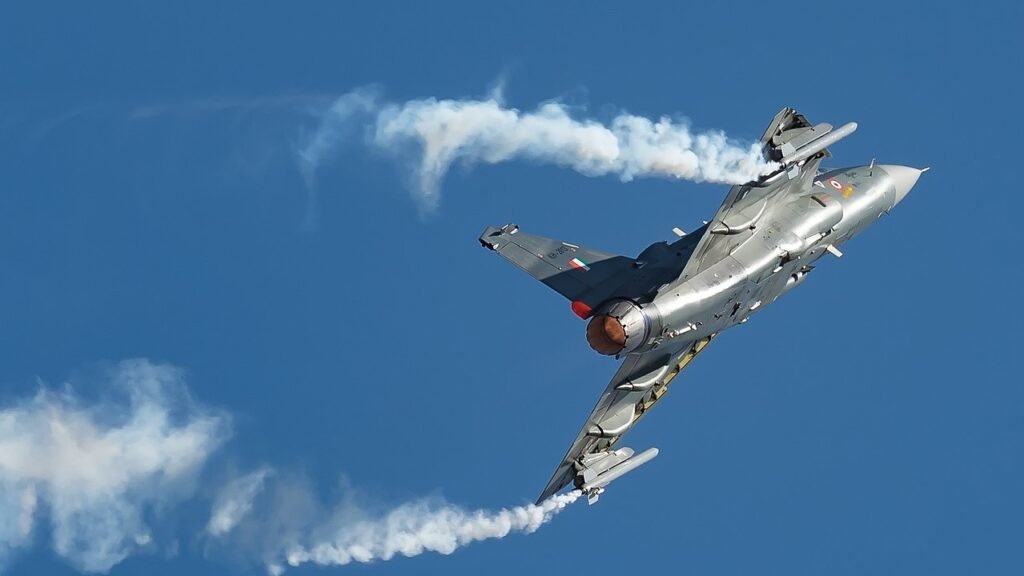
Another reason for the development of the Tejas LCA is to promote the indigenous defense industry. The Tejas LCA project has involved a large number of Indian companies and has helped to develop the country’s aerospace industry. The project has also led to the development of new technologies and skills, which can be used to develop other weapons systems and products in the future.
Finally, the Tejas LCA is designed to be a cost-effective fighter jet. The aircraft has been designed to be lightweight and to use off-the-shelf technologies, which helps to keep costs down. Additionally, the aircraft is designed to be easy to maintain, which can help to keep operating costs low.
What are The HAL LCA Tejas General Characteristics?
The HAL Light Combat Aircraft (LCA) Tejas is a single-engine, fourth-generation, supersonic, light-weight, multirole fighter aircraft developed by the Hindustan Aeronautics Limited (HAL) and the Aeronautical Development Agency (ADA) for the Indian Air Force (IAF) and Indian Navy.
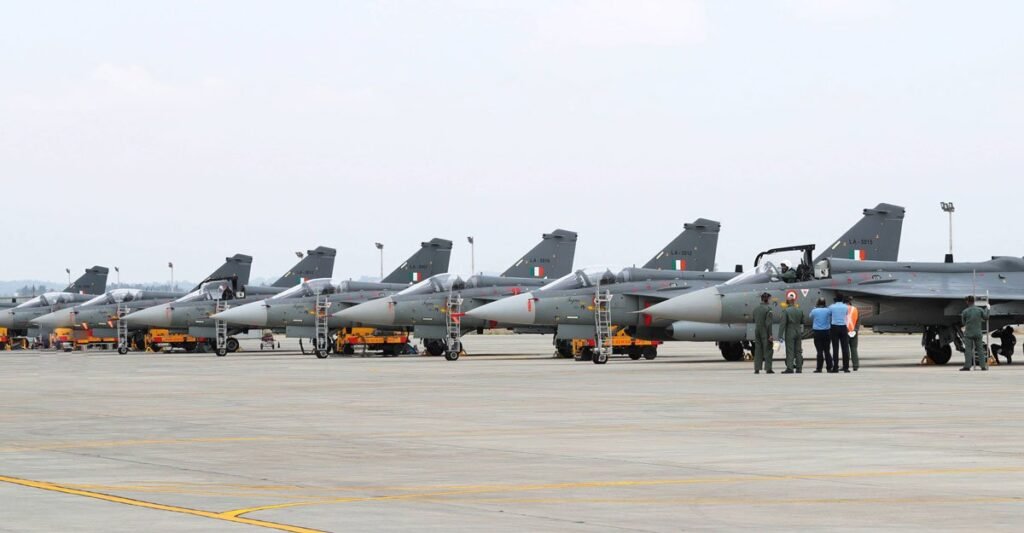
Specification
- Length: 13.2 meters
- Wingspan: 8.2 meters
- Height: 4.4 meters
- Maximum speed: 1,350 km/h
- Operating altitude: 15,000 meters
- Engine: GE F404-IN20 turbofan engine
- Maximum thrust: 80kN
- Maximum take-off weight: 13,500 kg
- Maximum payload: 3,500 kg
- Crew: One pilot
HAL LCA Tejas Armament
The Tejas LCA is equipped with a 23mm GSh-23 twin-barrel gun, which is capable of firing up to 2,500 rounds per minute. It can also carry a variety of air-to-air and air-to-ground missiles, including the R-73 and R-77 beyond-visual-range missiles, and the Magic II short-range missiles. It also has the capability to carry a variety of bombs and rockets, including the 1,000 kg laser-guided bombs and the 80 mm rockets.
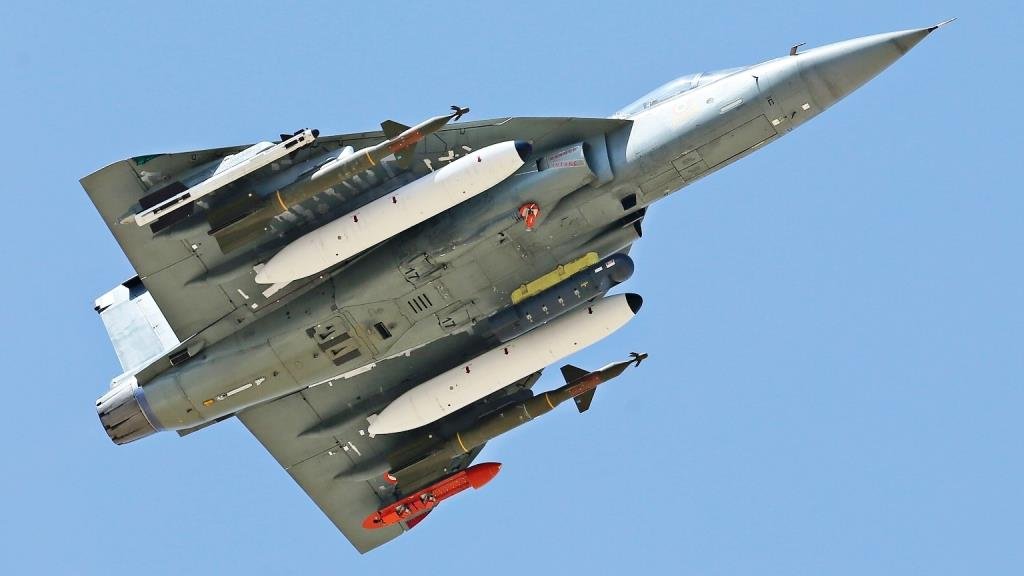
HAL LCA Tejas Sensors
The Tejas LCA is equipped with an Elta EL/M-2032 multi-mode radar, which provides all-weather, day, and night capability for air-to-air and air-to-ground operations. The aircraft also has an advanced missile approach warning system, which provides early warning of incoming missiles, and a radar warning receiver which detects radar signals from enemy aircraft and ground-based radar systems.
HAL LCA Tejas Avionics
The Tejas LCA is equipped with an advanced avionics suite, including a glass cockpit, a digital fly-by-wire flight control system, and a digital computer-based weapon delivery and navigation system. It also has a helmet-mounted display and sight, which allows the pilot to target and engage enemy aircraft without having to look directly at them.
Performance
The HAL Tejas Light Combat Aircraft (LCA) is designed to be a highly maneuverable and capable aircraft, with a range of advanced features and systems that contribute to its performance.

- Maneuverability: The aircraft’s lightweight and highly aerodynamic design, along with its advanced fly-by-wire flight control system, make it highly maneuverable and capable of performing a wide range of maneuvers, including high-G turns and rapid acceleration.
- Range: The Tejas LCA has a range of 3,000 km with external fuel tanks which allows it to perform long-range missions without the need for mid-air refueling.
- Ceiling: The aircraft is capable of flying at an altitude of 15,000 meters (49,212 ft) which gives it an advantage in air-to-air combat situations.
- Weapons: The Tejas LCA is equipped with a variety of weapons, including beyond-visual-range missiles, close combat missiles, and a variety of bombs and rockets, which make it a highly capable ground attack aircraft.
- Advanced capabilities: the Tejas LCA is also designed to be easy to maintain and operate, with a high level of automation and a simple, straightforward systems architecture. This makes it a highly reliable and cost-effective aircraft for the Indian Air Force and Indian Navy.
Operational Use
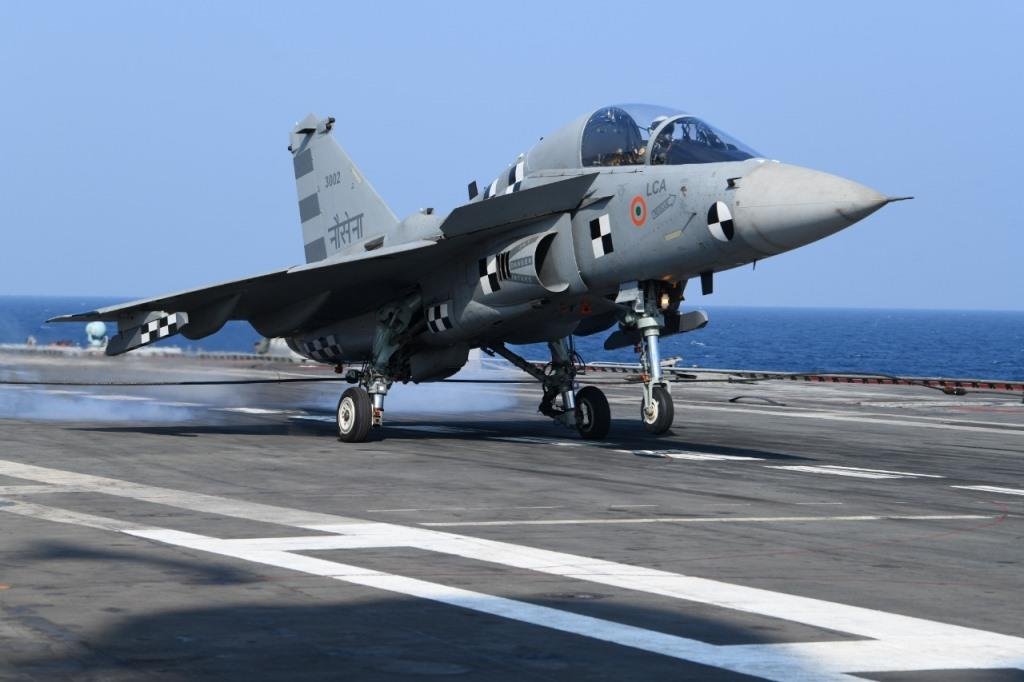
The LCA Tejas has been in operational use with the Indian Air Force since 2016, and the Indian Navy is also planning to induct the aircraft into its fleet. The Indian government has also announced plans to export the LCA Tejas to other countries.
The aircraft has proven to be highly capable and reliable in operational use and has received positive feedback from pilots and ground crew. The Indian Air Force has placed an order for a total of 123 LCA Tejas aircraft, with the first batch of 40 aircraft already delivered.
Variants of HAL LCA Tejas
The HAL Tejas Light Combat Aircraft (LCA) is available in several different variants, each designed for a specific role or mission:

- Tejas Mark 1: This is the initial operational variant of the Tejas LCA. It is equipped with a variety of avionics and weapons systems, including a multi-mode radar, beyond-visual-range missiles, and a variety of bombs and rockets. It has been inducted into the Indian Air Force (IAF) and Indian Navy.
- Tejas Mark 1A: This is an upgraded variant of Tejas Mark 1. It features several improvements, including an advanced electronic warfare suite, an advanced missile approach warning system, and an improved radar warning receiver. It also has an air-to-air refueling capability, which increases its range and endurance. It is also equipped with advanced avionics, sensors, and communication systems.
- Tejas Mark 2: This variant is currently under development and is expected to feature a number of improvements over the Mark 1 and Mark 1A, including a more powerful engine, a longer fuselage, and an improved avionics suite. It is expected to be used for air-to-air combat, ground attack, and reconnaissance missions.
- Tejas Navy: This variant is being developed for the Indian Navy and will be specifically optimized for aircraft carrier operations. It will feature a strengthened airframe, an arrestor hook, and other features to allow for landing and take-off from aircraft carriers.
What is The Difference Between HAL LCA Tejas vs JF-17 Thunder?

The HAL Tejas Light Combat Aircraft (LCA) and the JF-17 Thunder are both modern, single-engine, multirole fighter aircraft that have been developed by their respective countries, India and Pakistan.
Design and capabilities: there are some similarities between the two aircraft. Both are lightweight, single-engine fighters that are optimized for air-to-air combat and ground attack missions. Both aircraft have been equipped with a variety of avionics and weapons systems, including multi-mode radar, beyond-visual-range missiles, and a variety of bombs and rockets.
There are also some key differences between the two aircraft. The Tejas LCA is a fourth-generation aircraft, while the JF-17 Thunder is a third-generation aircraft. This means that the Tejas LCA is equipped with more advanced avionics, sensors, and communication systems. The Tejas LCA also has a higher thrust-to-weight ratio than the JF-17, which gives it a better performance in terms of maneuverability and speed.
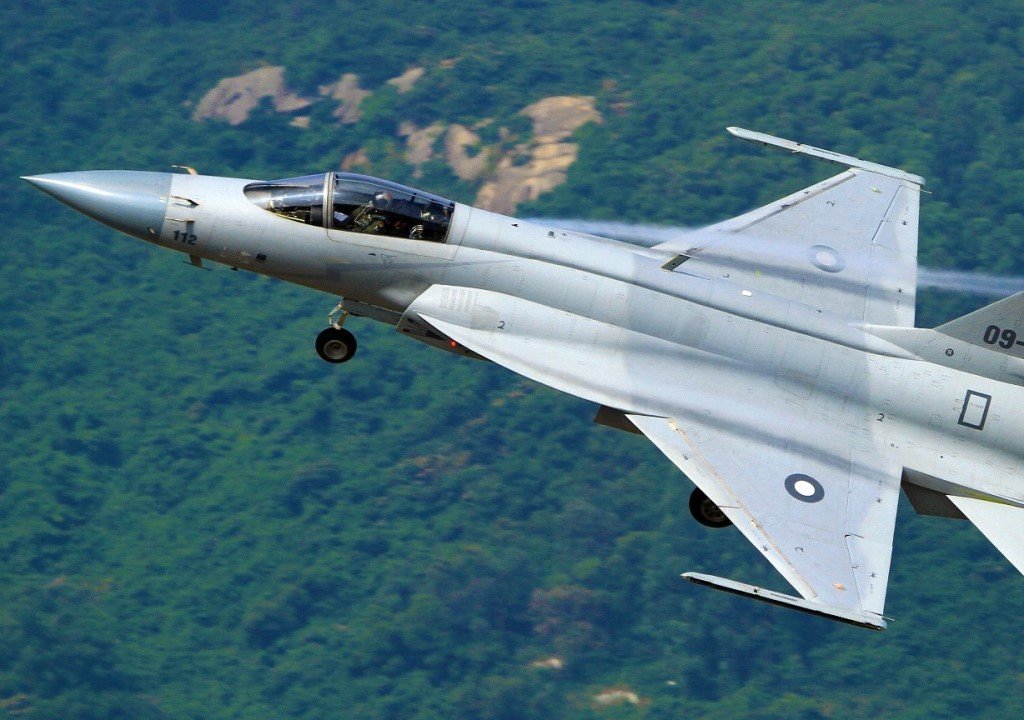
Another difference is that the Tejas LCA is developed and manufactured by India’s Hindustan Aeronautics Limited (HAL), while the JF-17 Thunder is jointly developed and manufactured by Pakistan Aeronautical Complex (PAC) and China’s Chengdu Aircraft Industry Group (CAC).
Performance: The Tejas LCA has successfully demonstrated its capabilities in air-to-air combat and ground attack missions, it also has been cleared for carrier operations by the Indian Navy. While the JF-17 Thunder has also been proven in air-to-air combat, ground attack, and reconnaissance missions, it’s in service with the Pakistan Air Force and exported to other countries.
Read Previous Fighter Jet Blog – F16 Fighting Falcon
Do you know the world’s fastest aircraft is Lockheed Martin SR-71?

